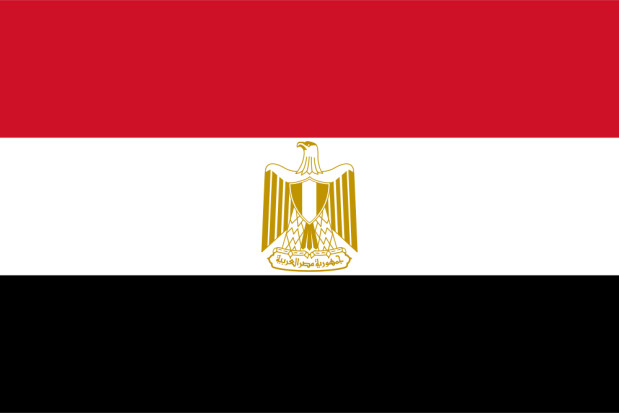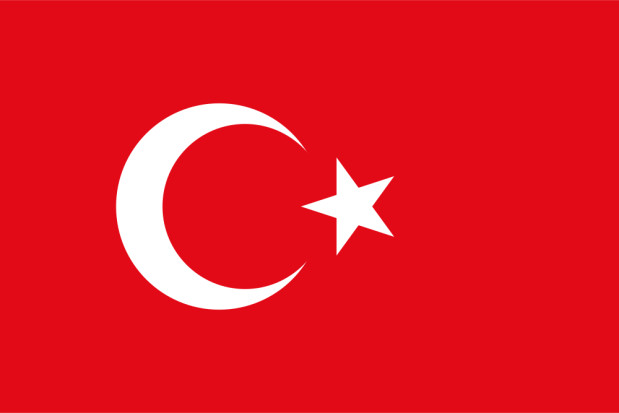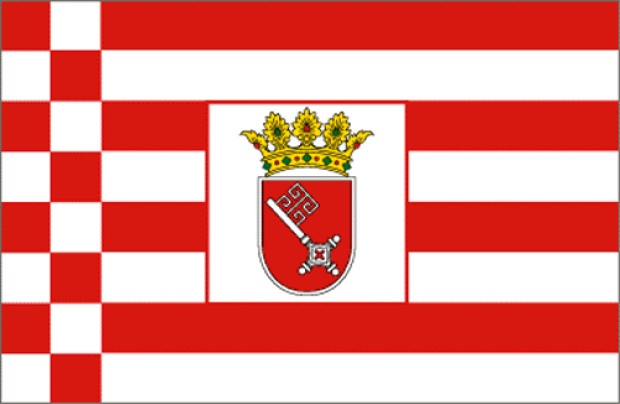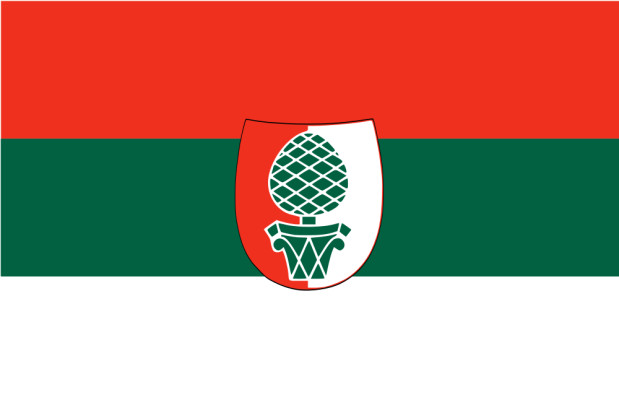Flag of Egypt

Listen to anthem
Background knowledge
The current flag of Egypt shows three horizontal stripes of equal width in red, white and black with the golden (yellow) eagle of Saladin, and was hoisted in its current form on 04.10.1984.
In its design it goes back to the Arab Liberation Flag introduced after the abolition of the monarchy in 1952. The eagle in today's flag, as in the Arab Liberation Flag, is the symbol of Sultan Saladin and his descendants, the Aijubid Caliphs, and an idol figure of Arab Unity. Today he wears a breastplate, which is in the colors of the flag, and holds in his clutches an inscription band with the name of the state. Specifically for Egypt, the colors have the following meaning: red recalls the struggles of the revolution and the blood spilled in the process, white stands for a bright future and black for the dark past.On the flag history of Egypt: The flag of the Turkish Viceroyalty of Egypt (1867-1882) is clearly of Turkish origin, as can be seen from the color scheme and symbols. The flag of the Kingdom of Egypt traces its origins to Islamic green, with Islamic symbolism still somewhat reminiscent of the Turkish period. The green is also said to be reminiscent of the fertile Nile Delta. This flag, even after the end of the Kingdom (1952), continued to be used until 1958. The flag of the VAR (1958-1961) shows three stripes in red, white and black, which had already been officially introduced in Egypt with the Arab Liberation Flag in 1952, supplemented by two stars, one of which stands for Egypt and the other for Syria. Even after the end of the VAR (1961) Egypt kept this flag until 1972. In the course of the formation of the "Federation of Arab Republics" between Libya, Egypt and Syria in 1972, it was agreed that these three states should use red, black and white flags with a golden falcon in the center. The only difference was to be the name of the respective country in the written band held by the falcon in its fangs. Egypt introduced such a flag in 1972, and kept it until 1984 (Libya until 1977, Syria until 1980).The color quadrilateral of green, white, black and red is a specifically Arab color symbol, the Pan-Arab colors. The (pan)Arabic colors were officially introduced as the colors of the Arab Movement during World War I, when the Kingdom of Hejaz broke away from the Ottoman Empire, by the Sheikh Hussein of Mecca ? from the Hashemid dynasty. The colors have the following meanings: red is the color of Omar, the second caliph; white represents the Umayyads, a caliph dynasty that goes back to the fifth caliph Moawija I; green represents the Fatimids, an Ismaili Shiite caliph dynasty that goes back to the fourth caliph Ali; and black represents the Abbasids, a caliph dynasty that goes back to the caliph Abbas I. The colors are also the colors of the Hashemites. Red is also the color of the Hashemites, an Arab ruling dynasty that probably dates back to Hashem ibn Abd al-Manaf, Muhammad's grandfather. Green is also the color of Islam in general, and thus does not refer only to Arab countries.
Three horizontal stripes (red, white, black) with the national emblem in the center of the flag; the national emblem shows a golden eagle facing the flagpole.
Hymn
lyrics
That's what ChatGPT knows about the flag of Egypt
-
The flag of Egypt consists of three horizontal stripes in red, white and black. The upper stripe is red, the middle one is white and the lower one is black. The flag symbolizes the unity of the country and the revolution of 1952. It is also called the flag of Arab Nationalism.
-
The Egyptian national flag is a symbol of the country's national identity. It was first used in 1882 when Khedive Tewfik I introduced the flag as a national symbol. The flag consists of three horizontal stripes in red, white and black, symbolizing the blood, hope and resistance of the Egyptian nation.
-
The national flag of Egypt consists of three vertical stripes of equal size. The upper stripe is red, the middle stripe is white and the lower stripe is black. In the middle of the white stripe there is an Egyptian cross consisting of a main red star, a white crescent and two white stars. The flag symbolizes the unity between Egypt and its neighboring countries. It also symbolizes the struggle for independence and freedom of the country.
Discover something new
Random flags from our large flag database.






